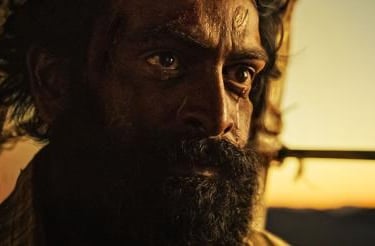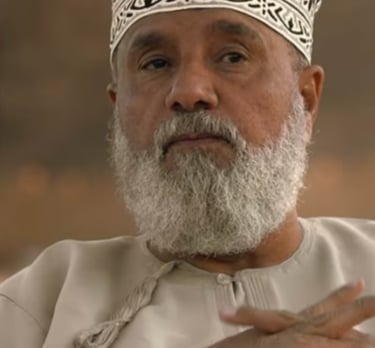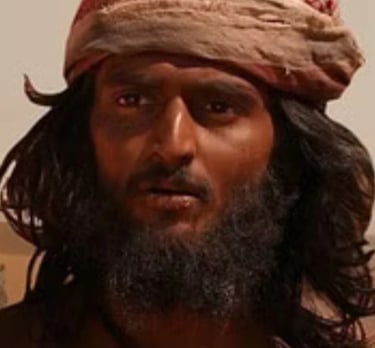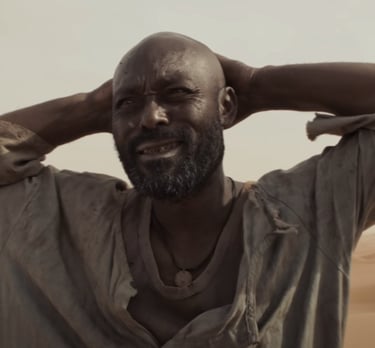

Introduction to The Goat Life
Overview:
The goat life is a film adaptation of the novel Aadujeevitham by Benyamin that’s based on true events. It depicts the life of Najeeb, Muhammed, and Hakim, who migrated from India to Saudi Arabia dreaming of a better income to sustain their families. They were promised a job as a company helper, a room with AC, and a salary that would pay their debts back. However, they end up trafficked, enslaved, and brutally tortured physically and psychologically for three years.
Plot:
Upon arrival, Najeeb and Hakim were disoriented at the airport not knowing their employer. With clueless faces and language barriers, they were approached by a Saudi Arabian man who grabbed their passports and took them to separate areas in the desert to work as goat herders, stripping them of communication, and subjecting them to inhumane conditions and severe isolation. Najeeb adapts to his harsh life as the years pass, forming a deep bond with the goats, who become his only companions.
Title:
The title "The Goat Life" reflects Najeeb's existence as a goat herder, which comes to represent his identity loss and dehumanization. The "goat life" is a metaphor for the horrible conditions he faces, where he is forced to take care of animals and lives a life stripped of the barest necessities for existence.
Cinematic Representations
Director Blessy takes the audience on Najeeb's intense mental and physical journey. His approach to storytelling emphasizes the harsh realities of modern slavery and isolation, relying on rawness and realism. The vastness and emptiness of the desert are beautifully captured by K.U. Mohanan's cinematography. It portrays the desert with a harsh and almost claustrophobic beauty, contrasting it with Najeeb’s vivid memories of his loving family and fertile home in Kerala. A.R. Rahman's music and sound design, natural sounds like the wind, water, and goats' bleats, also add emotional depth to the scenes. When music is used, it is reflective, often accompanying moments of introspection or memory.
Themes
Goat
Najeeb’s existence becomes one of extreme hardship. He endures abuse from his employer, gets shot by a gun, and is whipped by The Saudi man’s Igal (black cord worn by Saudi men) as well as being deliberately conditioned to hunger and thirst. Clinging to dreams of escaping and returning home to his family with many escape attempts, begging and praying, Najeeb succumbs to 'herd thinking' out of pure survival instincts and deep isolation, losing his sense of individuality as he spends years tending to the goats. He would eventually behave like one, sleeping next to them, drinking their water, and eating their food. This psychological depth in Najeeb's story showcases how his mind longed for the tiniest mercy and validity, as he starts to perceive his existence as no different from the animals. The goats serve as both a metaphor for his imprisonment and a reflection of his psychological development.
Water
Throughout the movie, Najeeb reminisces about memories of his home in Kerala, where water was plentiful, symbolizing a life full of vitality and nurture. Water reflects a connection with nature, family bonds, and security. The presence of water in his past environment affirmed his existence and hope. In the desert, however, Najeeb is deprived of water that is rare and costly. This physical absence of water mirrors his psychological decline as he is cut off from the comfort, love, and familiarity of his previous life to eventually lose his identity and hope. The contrast between his abundant past and his current deprivation deepens the reader's understanding of his mental state, symbolizing his thirst not only for water but for freedom and humanity.
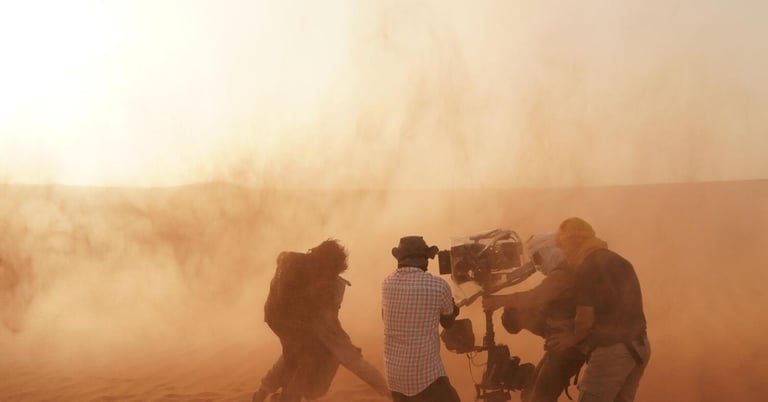

Alienation
Alienation is a central theme in The Goat Life. Najeeb was part of an affectionate and caring community, connected to his family, culture, and the natural world around him. He had a strong sense of belonging and identity rooted in his relationship with his past environment. However, being thrust into the desert as a goat herder, Najeeb is cut off from all human contact, and treated as less than a human. His estrangement from society grows worse by the brutality of his enslaver and the endless days of silence as there's no one with whom to share his pain. Najeeb feels alienated on both an existential and physical level. Years pass while he takes care of the goats, and he grows more and more disconnected from the past and loses sight of the person he once was.
Identity
The goats, water, alienation, enslavement, resilience, and every aspect of the movie plays into the theme of identity. After being robbed of his freedom and independence, Najeeb’s identity crisis begins with this dehumanization, as his sense of self gets more and more shattered. He is now perceived, also by himself, as an instrument for his employer's gain rather than as a living, thinking, and feeling human being. At a certain point, his identification with the goats becomes a disturbing reflection of his loss of identity. In a critical scene, Najeeb sees his reflection in a car mirror. As he is confronted by a stranger, skeletal, unshaven, and weathered, he screams in terror, unable to recognize himself. Forced to face the harsh truth of how far he has deviated from the man he once was, this scene captures the concept of identity loss.
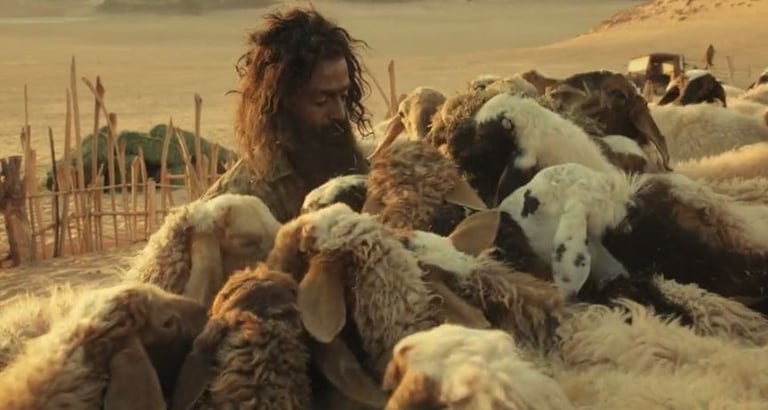

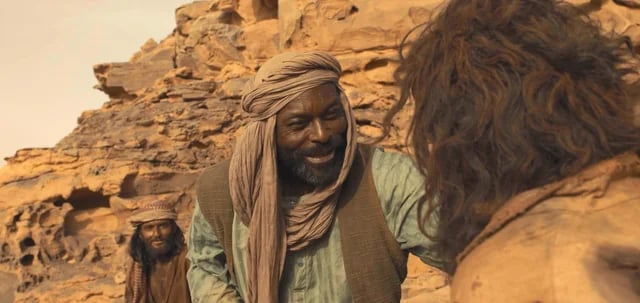

Character Analysis
Protagonist: Najeeb
Played by Prithviraj Sukumaran, the main character, Najeeb is a simple Keralan who migrates to Saudi Arabia in search of a better life. He is a dedicated worker, full of hope, with strong ties to his faith and family. However, after losing his independence, identity, and dignity during his time in the desert, he becomes a symbol of survival and resilience.
Antagonist: Arbab
Najeeb's employer played by Talib Al Balushi, the Arbab, treats Najeeb as subhuman, enslaving him with cold, cruel, and exploitative methods. He is a living example of the brutality and inhumanity of a system that uses power to dominate and degrade migrant labor. His merciless treatment and lack of empathy make him a powerful force in Najeeb's fall into despair and misery.
Supporting Character: Hakeem
K.r. Gokul plays the role of Hakeem, another laborer who was abducted and enslaved under similar conditions. His tragic circumstances emphasize the common hardship experienced by many migrant workers and the extreme will to achieve freedom. Hakeem serves as a reminder of human connection though it is constantly taken away, which enlarges the scope of Najeeb’s isolation.
Supporting Character: Ibrahim
Jimmy Jean-Louis as another fellow worker, the character Ibrahim Khadiri plays a significant role in Najeeb’s journey and outcome. He serves as a reminder of the hopes and promises that were dashed, and the optimism that migrant laborers hold onto when they travel to the Middle East.
Social & Political Commentary
Modern Slavery & Exploitation
The Goat Life offers a powerful example of modern slavery and human trafficking faced by migrant workers in the Middle East. Najeeb’s story as a forced goat herder under an abusive employer is a harsh reality for many workers. Based on real-life events, the film highlights the lack of basic human rights, dehumanization, and psychological and physical torture. This portrayal critiques the systems that allow such exploitation and abuses to persist, creating an environment where workers are vulnerable, with limited legal rights and no protection.
The Gulf Dream
The Goat Life juxtaposes the "Gulf Dream" with the harsh reality many migrant workers face. For Najeeb and many others, the Middle East represents an opportunity for better income to support their families. However, the film exposes the grim truth that this dream often turns into a nightmare. Workers find themselves stripped of their freedom, hope, and dignity.
Source: IndiaTvNews
Source: KhaleejTimes

